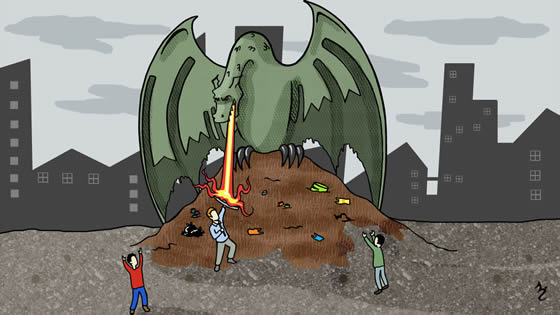
For many companies, Corporate Social Responsibility is an outward facing strategy designed to catch the eye of investors, customers and potential recruits. With this external focus, these strategies overlook the huge benefits that exist by extending the process to actively engage and motivate employees. Experience shows that four key elements are required to make a CSR employee engagement project successful.
Congregational Champions
The first is recognising the importance of identifying, recruiting and supporting employees to act as leaders or Champions. Environmental messages conveyed by management are often viewed with suspicion as being cost cutting exercises dressed up in more palatable clothing. Initiatives driven by peers tend to find a much more receptive audience. Achieving change within a company follows a similar dynamic to a church congregation. Imagine a cold church on a Sunday morning. The organist starts up and after a momentary silence a few hardy souls start singing loudly & usually off key. Their singing makes it legitimate for the rest of the congregation to join in. There will also be a few who just mime! The leaders or Champions act as these first singers, it is essential to ensure that they have the confidence, legitimacy and skills to fill their role successfully.
Measure That Carbon Footprint
The second key element is the importance to the Champions of discovery and learning. Most companies measure their energy use and waste, many are also now realising the importance of measuring their carbon footprint. These exercises tend to be undertaken by technical specialists and the results are not shared with the organisation in a compelling or motivational manner. It is important to get the Champions to find the data for themselves. This includes rummaging through bins, undertaking staff surveys and finding meter readings. This data is then translated into tangible results illustrating the number of balloons of carbon dioxide produced, the weight in lorries of the rubbish thrown away and the amount of waste caused by normal working procedures. Through this process, Champions get a real understanding of the environmental impact of the business and are motivated by the results to create significant and embedded change.
Sculptures, Gyms and Green Feet
The third key element is that, when armed with the results of the measurement and given the legitimacy to act, employees can be fantastically creative agents of change. Over the years waste sculptures have been built in very smart atriums, energy raids resulting in balloons being attached to electrical equipment left on, corporate logos turning green and green footprints mysteriously encouraging people to use the stairs rather than the lift. Creating interactive displays has helped many companies with these communication campaigns. One example is a carbon gym consisting of a range of equipment including an energy bike. Employees get on the bike and through their pedalling, power a range of different electrical appliances. Tiredness in their legs quickly illustrates just how much energy is needed to power a plugged in mobile phone charger – even when a phone is not attached – or a computer monitor screen carelessly left on over lunch. The gym helps people make a physical connection between their daily lifestyles and climate change.
When Will It End?
The final key element is the importance of giving Champions a structure within which to work and thanking them for their efforts. Many companies have great green team initiatives for a short period, but these often fizzle out. Most employees involved in environmental initiatives are doing so over and above their normal role. It is difficult for them to sustain energy and commitment over an indefinite period of time. The most effective programmes usually last for twelve months with any one group of Champions. Employees know exactly what is expected of them during this period and can see that their efforts will be making a tangible difference. Thanking employees for their efforts is also essential. Staging a celebration event when the second audit results are published and awards of a United Nations Environment Programme certificate to all volunteers, ensures high profile recognition for those involved.
The Results
The experiences of organisations that have adopted this approach have consistently shown that carefully structured employee engagement programmes can significantly improve a company’s environmental performance and cut waste by an average of 30% and energy use by 12%.


